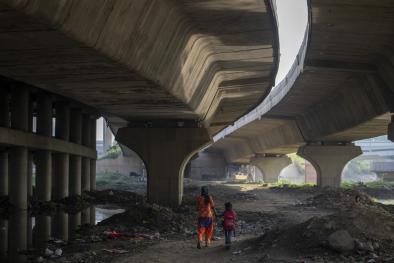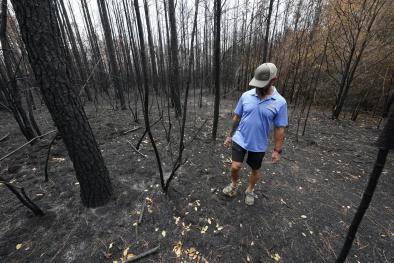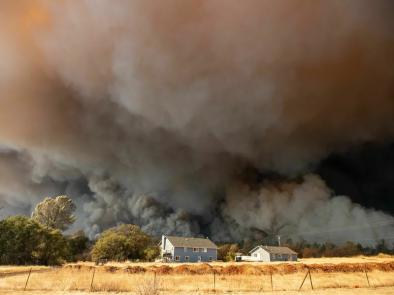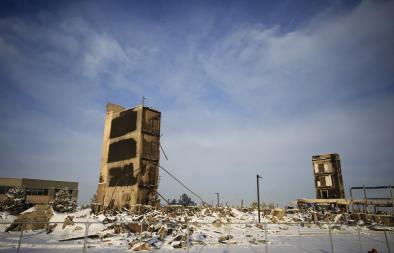Marshall Fire December 2021
An urban firestorm fueled by hurricane-force winds incinerated nearly 1,000 homes and structures in and around Boulder, Colorado in just one day, making it the most destructive wildfire in the state's history. Climate change, primarily caused by the extraction and combustion of fossil fuels, supercharges fires like the Marshall Fire through increased temperatures and exacerbated drought. In all, an estimated 6,000 acres were burned by the fire.
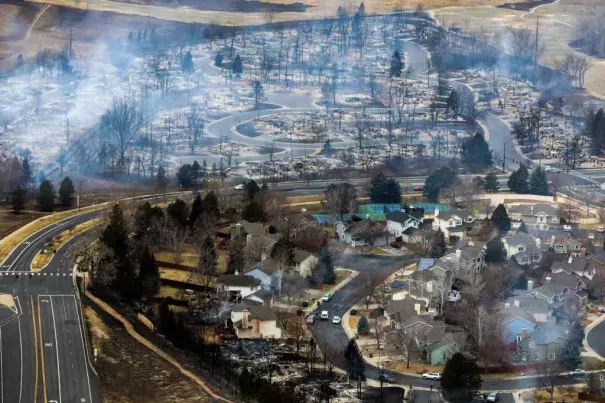
Climate science at a glance
- Record warmth and extreme drought, intensified by climate change, set the stage for the Marshall fire.
-
Climate change is worsening wildfires by sucking moisture out of the land surface, making potential fuels more flammable.
-
The fire season has increased by more than two months in the western US, largely due to climate change.
-
All 20 of the largest wildfires in recorded Colorado history have taken place in the last 20 years.
Climate signals breakdown
Climate signals #1: Land surface temperature increase
Climate change has significantly increased air and land temperatures in the Western US. These higher temperatures can make droughts worse. Warmer winters also mean less snowpack or earlier snowmelt, while warmer summers further increase and dry out already parched soil and plants. These conditions, along with high winds, can lead to record-breaking wildfires. In some cases, the extreme heat and dryness can cause explosive fires that burn hundreds or thousands of acres in just a few days.
Observations consistent with climate signal #1
- Temperatures in Colorado between June and December were the warmest on record.
- Unusually warm conditions intensified drought conditions in Colorado from the summer through the end of the year.
Climate signals #2 & #3: Land surface drying & drought risk increase
Global warming is altering regional water cycles. Warmer air can hold more moisture, which means it takes more water for the air to be fully saturated. When the air is not fully saturated, the difference between the amount of moisture in the air – and how much moisture the air can hold – is known as vapor pressure deficit (VPD). High VPD (which occurs when the air needs much more water to be fully saturated) increases rates of water loss from plants and soils (known as evapotranspiration), and this, in turn, causes drying and heating of land surfaces and contributes to more frequent and severe drought and wildfire events.
Zhuang et al. 2021 find that over two thirds (68%) of the increase in vapor pressure deficit in the western US between 1979 and 2020 is due to climate change.
Observations consistent with climate signals #2 & #3
- The Evaporative Demand Drought Index, or EDDI, has been record high in eastern Colorado over the last month. Most commonly used in the summer, EDDI provides a snapshot of how “thirsty” the atmosphere is, compared to normal for that time of year. When EDDI is anomalously high, it means the atmosphere is trying to take more moisture out of the ground.
- The Marshall fire burned in an area experiencing "extreme" drought conditions.
- For all periods from Jul 1st to Dec 29th (essentially the second half of the year), Denver has been the driest on record by over an inch.
- The very dry summer and fall dried out grasses and prepared the kindling.
Climate signal #4: Season creep
Higher temperatures are extending the fire season in the western US by shifting conditions more characteristic of September and October to November and December.
"I think one thing that’s really important to note [about the Marshall fire] is that this is a winter wildfire...there’s only one other time in my career when I’ve talked about snow putting out wildfires...This is an important signal. And we’ve seen this signal across the West."
Jennifer Balch, director of the Earth Lab at the University of Colorado, Boulder
Observations consistent with climate signal #4
- At least 5,972 daily highs were tied or broken in December, according to NOAA/NCEI.
- In addition to the Marshall fire, unusually late fire activity in 2021 also occurred in Montana and the western Plains.
- The Marshall fire came just weeks after a pair of severe and unprecedented tornado outbreaks that "pushed the seasonal envelope hard in terms of numbers, intensities, and northerly latitudes."
Related Content

